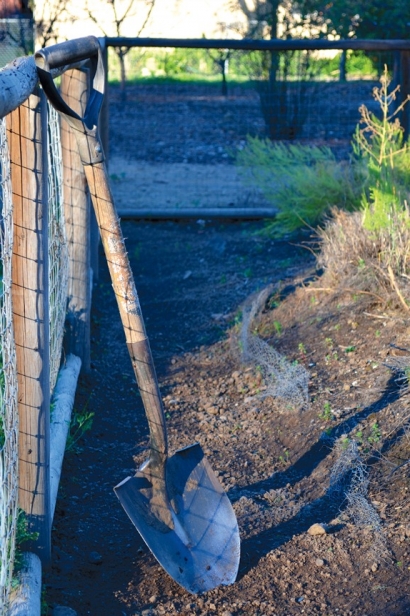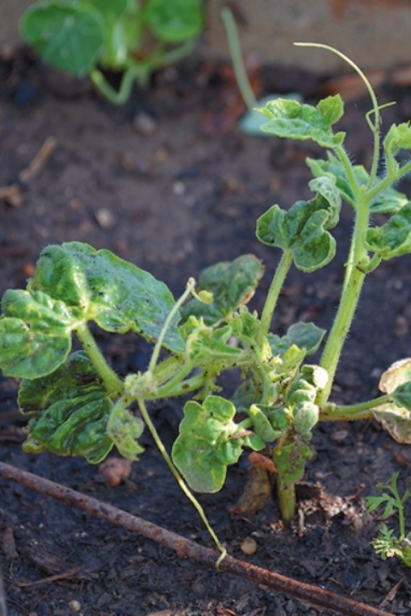Ground Breaking Time to Prep Spring’s Vegetable Garden
Spring is a time I, and my gardening brethren, look forward to. It heralds a new season with promises of summer produce and meals featuring just picked, sun-ripened vegetables. But before we can even get to that stage, here are three important things home gardeners need to do.
#1 Prepare the ground
If you haven’t already, pull out and remove any old plants from the previous season. Then, using a large fork, dig up and turn the soil, loosening it well. This is particularly important if you are planning to grow root crops such as carrots, beets or potatoes, because they cannot express themselves fully in hard, compacted soil.
Break down any clods so that you end up with a nice, fine, loose-textured tilth. This is also the ideal time to add compost or manure, and this should be incorporated into the soil. If you have a compost pile, make sure it has fully decomposed before adding it to the soil. It’s best to sieve the compost and only add the fine material, returning any undecomposed material back to the compost pile. If you don’t compost—yet—buy bags from a local nursery or hardware store.
Once you’ve loosened the soil, spread the compost evenly over the surface and turn it in well to incorporate it. With the heavy clay soils of Ventura County, adding organic matter every year will greatly benefit and improve the soil structure. It is worth noting that compost is usually low in plant nutrients, so you may want to add additional fertilizer for your growing crops, and this is a good time to do so.
#2 Choose what to grow
Determine how much space each plant needs by the time it matures, and ensure that you have adequate room. Avoid the urge to have too many plants. If they are too crowded, they will not be able to grow to their full potential and will tend to be small, consequently producing small fruits and lower yields.
In the early stages of growth, it may look as if there is plenty of room, but remember: Little plants grow up to be big plants. If you plan on growing beans, be sure to differentiate between bush beans and pole beans. Pole beans really do need poles or a trellis on which to grow.
Vine crops such as watermelon or pumpkin can grow over and smother neighboring crops, if there’s not enough room for them to spread out. The same is true for zucchini, whose large leaves can shade out adjacent plants if planted too close.
Plan to spread out the planting of some crops so that you have an even supply of vegetables over a long period. Beans and lettuce can be planted every two to three weeks, so be sure to leave space for this to be done.
#3 Lay out your garden
Plan where you will put each plant—before you pick up a spade and start digging. One point home gardeners frequently overlook is the need to rotate your crops. (It’s not just for large commercial growers.) Constantly growing the same varieties in the same place can cause disease to build up in the soil, affecting or killing the plants.
Tomatoes are one of the most important varieties to rotate. Many gardeners who grow their plants in the same place year after year because it’s the “perfect” place are suddenly confronted with a plant that grows very poorly and produces little or no fruit—often because of a soil-borne pathogen known as root knot nematode. This is extremely difficult to control, so the best way to prevent buildup of this pest is to practice crop rotation.
Unfortunately, most vegetable species are susceptible to the pathogen. If you are faced with it, plant corn, onions or a tomato variety with the letter “N” after its name—the N signifies nematode resistance, like Better Boy VFN—or leave the area fallow for a year. Removing any weeds that appear will reduce the nematode population.
Even with a small garden, try to move your plants around so you’re not planting in the same place twice.
Now you are ready to start—almost. Wait until the weather warms up and the soil is no longer cold before committing anything to the ground. It takes the soil longer to warm up than the air above it and seeds will germinate very slowly in cold soil, affecting subsequent growth and vigor. Water the soil well so that it is nicely moist and begin to plant.
SPRING PLANTING GUIDE
- Cantaloupe
- Corn
- Cucumber
- Eggplant
- Green beans
- Lettuce
- Peppers
- Radish
- Summer squash
- Watermelon
- Winter squash (harvests in fall)









